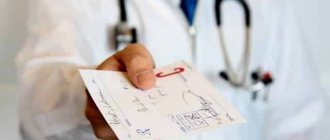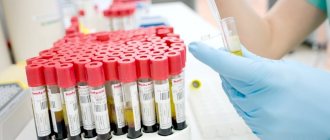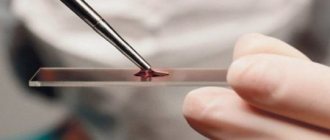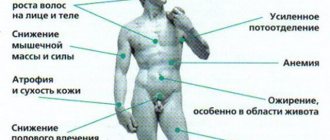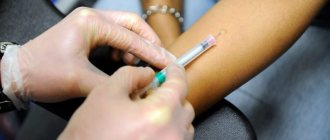Low hormone levels: how to bring them back to normal
A low level of estradiol is also observed during menopause, when the reproductive function of the female body begins to fade. But, despite the fact that this is a physiological process, it cannot be considered the norm.
A decrease in estradiol is a direct path to osteoporosis. In addition, with a lack of hormones, the symptoms of menopause are significantly intensified.
Therefore, it is important to know how to increase estradiol during menopause and normalize its balance during reproductive age
Medications
In what preparations can 17 beta estradiol be found? There are a huge variety of hormonal drugs containing estrogens, but only a doctor can choose a specific medicine
First of all, this is important for the safety of the patient herself.
If we are talking about diseases of the uterus or ovaries, most likely, the woman will be prescribed oral contraceptives containing phytoestrogen or a synthetic analogue of this hormone. In cases where the causes lie in diseases of the pituitary gland, more serious steroid hormones may be prescribed.
In addition to COCs, drugs containing estradiol include:
- Ovestin;
- Ovepol;
- Klimara;
- Proginova;
- Estrimax;
- Microfollin, etc.
Each of them has its own contraindications and side effects, and it is impossible to understand which drug is suitable for a particular woman on your own. Only a doctor can do this, based on the data obtained during the study.
Therefore, it is better for the patient to think about how to raise estradiol naturally. Fortunately, there are many ways, and all of them are absolutely safe for health.
How to increase estradiol without drugs?
To increase hormone levels, if its decrease was caused not by pathological, but by physiological reasons, or by the negative impact of external factors, first of all, it is necessary to radically change your lifestyle
Nutrition is also important
What does estradiol contain? Protein foods are the main source of this substance. Poultry and fish, pork, beef - these are the products that should definitely be in the diet of every person. Of course, in reasonable quantities.
Eggs, milk, and fermented milk products are also sources of estrogens. If we talk about herbs, then decoctions of sage and licorice root will help stimulate the body’s production of its own, “native” estradiol.
But if the reasons for the deficiency of the substance lie in diseases, drug therapy cannot be avoided. Do not ignore alarming symptoms, so as not to later regret the time spent trying to solve the existing problem yourself!
What is estradiol
Estradiol is the main female hormone that is produced in the ovaries of women, as well as the adrenal cortex. His job is to give the figure femininity and organize the correct menstrual cycle.
In cooperation with progesterone, it promotes the growth and development of tissue in the uterus for the attachment of an egg to it. Estradiol is directly related to the growth of the egg and the level is different in each phase of the menstrual cycle. This indicator also depends on the time of day: the highest indicator is from three o’clock in the afternoon to 6 pm, and the lowest from midnight for two hours.
Estradiol norms during pregnancy
During pregnancy, the female body undergoes global changes, especially in terms of hormonal activity. During the entire period of pregnancy, the level of the female hormone changes several times, and quite noticeably. Knowing the norms for each stage of pregnancy, doctors can judge its progress based on the level of estradiol. And if a deviation from known norms is observed, then a conclusion is drawn about a disruption in the functioning of one or another system in the body of a pregnant woman.
That is why the expectant mother should be tested for estradiol with some regularity. So that the doctor has the opportunity to determine a possible pathology in its initial phase. This affects the effectiveness of treatment and, accordingly, the condition of the fetus. When a pregnant woman needs to be tested, the doctor also determines.
According to the known standards of estradiol, in the first 3 months the level of the hormone ranges from 215 units. up to 4300 units During this period, the main hormone that controls pregnancy is progesterone. After 3 months, estradiol in a woman’s body begins to grow, increasing every day, this allows the embryo to develop properly. The highest level of the hormone estradiol is recorded in the period from 13 to 24 weeks. At this moment it is 27,000 units.
A woman should donate blood for estradiol frequently and regularly, since a low level of this hormone can lead to spontaneous abortion.
Laboratory methods for determining estradiol in blood
The E2 level is determined in venous blood, or more precisely in blood serum obtained from it.
Analysis for estradiol, including other hormones, is often performed using an enzyme immunoassay. This method is based on the specific interaction of polyclonal antibodies with detectable hormones in the blood.
An enzyme tag is added to the mixture formed by the hormone and antibodies, which breaks down the substrate. When adding a coloring component, the color of the solution changes. The intensity of this color is proportional to the content of the test hormone in the blood.
This method is often used in laboratories.
How to prepare for hormone tests
You need to follow certain recommendations when taking tests for progesterone and estradiol levels - your gynecologist can tell you how to take them. He must determine which day of the cycle is best to do this. It is unacceptable to prescribe such tests for yourself.
To determine the level of hubbub, blood is taken from a vein. Depending on the laboratory and research method, a person receives results within 1-7 days. How to take such tests correctly in order to get reliable indicators:
- the analysis should be carried out in the morning, preferably a few hours after waking up;
- blood is taken on an empty stomach. At least 8 hours should pass from the meal that was the day before (preferably even 10 hours);
- Drinking water before the procedure is allowed;
- the day before the test, you need to exclude fatty, heavy, spicy foods from your diet. You should also limit yourself to light physical activity and avoid stressful situations;
- on the eve of the study (1-2 days before), drinking alcohol and smoking is prohibited;
- you need to stop taking all medications. If this cannot be done, the laboratory technicians must be informed;
- An ultrasound or x-ray should not be performed immediately before blood sampling.
After receiving the results, you should contact your doctor. He will study all the indicators and, if necessary, prescribe additional examinations or treatment.
Bibliography
- Sexually transmitted infections. Educational and methodological manual edited by Professor Volkova E.N., 2009, Moscow, State Educational Institution of Higher Professional Education “RGMU named after. N.I. Pirogov."
- Emergency care in obstetrics and gynecology: a short guide. Serov V.N. 2008 Publisher: Geotar-Media.
- Atlas of ultrasound diagnostics in obstetrics and gynecology. Dubile P., Benson K.B. 2009 Publisher: MEDpress-inform.
- Anomalies of labor: a guide for doctors. UMO stamp for medical education. Podtetenev A.D., Strizhova N.V. 2006 Publisher: MIA.
- Anatomically and clinically narrow pelvis. Chernukha E.A., Puchko T.K., Volobuev A.I. 2005 Publisher: Triad-X.
- Miscarriage. A textbook for students, residents, graduate students, and students of FUVL.A. Ozolinya, T.N. Savchenko, T.N., Sumedi.-Moscow.-21s.-2010.
Ovulation tracking
But this is not all the features that will have to be taken into account. As already mentioned, estradiol has a special effect on ovulation. Readiness to conceive a child is often determined by the level of this hormone. Therefore, the question of when to give estradiol to a woman requires an unequivocal answer.
As a rule, the level of this substance reaches its peak in the middle of the monthly cycle. If you want to “catch” ovulation, a woman is recommended to donate blood for a dynamic analysis. The first time is on days 4-7 of the cycle, the second time is on days 10-13, the third time is on days 21-22. This way you can understand when a woman is ready to conceive.
Blood test for estradiol
Reproductive function is one of the most important for a woman. To successfully conceive, bear and give birth, you need a colossal supply of strength and health. Estradiol analysis will show the body's readiness for childbearing.
Analysis of estradiol, a hormone responsible for a woman’s reproductive function, is necessary in many cases. After all, hormonal balance is necessary for the normal functioning of organs and systems. Dissonance in one direction or another leads to irreversible consequences. Which can be avoided by conducting laboratory tests in a timely manner.
When to take estradiol?
Your doctor will determine when to take estradiol. The main indications for testing are:
- infertility;
- irregularity, disruptions in menstruation or its complete absence;
- failure to ovulate;
- uterine bleeding;
- pronounced premenstrual conditions;
- ovarian tumors, polycystic disease;
- beginning of pregnancy and before IVF;
- increase in the size of the mammary glands in men, hypogonadism;
- male type hair growth;
- osteoporosis.
For girls of puberty, analysis is indicated for anorexia and insufficient puberty.
Women of menopausal age should study estradiol in the following cases:
- pituitary failure;
- during hormone replacement therapy;
- if there is uterine bleeding;
- tumors of the ovaries or adrenal glands are detected.
On what day should I take estradiol?
It is not difficult to calculate which day of the cycle to take estradiol. Young women of childbearing age need to focus on the period between 6-7 days of the cycle. Women before menopause and premenopausal women are tested in the same way. For the accuracy of estradiol readings during this period, a period of active fluctuations and changes, repeated testing is necessary. Usually the analysis is repeated after 20 days.
Estradiol: how to get tested correctly.
Proper preparation of the body for testing involves:
- refusal of physical activity the day before;
- giving up alcohol in a few days and ideally quitting smoking in a day;
- staying in a positive psychological state.
The analysis requires venous blood taken in the morning and on an empty stomach.
Before blood sampling, you should not take medications containing estrogen - oral contraceptives. If necessary, you must take the medicine after donating blood, making sure to indicate the name in the laboratory.
Estradiol analysis: normal in women
Estradiol concentration levels may vary depending on menstruation and time of day. So, the most active production time is between 3 and 6 o'clock in the afternoon, at night - the time from midnight to 2 o'clock.
Follicular phase of the menstrual process from 12 to 350 pg/ml estradiol. The ovulation period is characterized by such readings as 85-750 pg/ml. In the luteal phase, this is the second half of menstruation, estradiol should be from 30 to 450 pg/ml.
The norm for women in menopause is 54 pg/ml. Readings up to 20 pg/ml are considered the healthiest, higher - a good result.
It is important that the woman understands the importance of this analysis and is ready to undergo estradiol testing. It’s not for nothing that estradiol is primarily a female hormone, so its effect on the female body is global
When is the procedure prescribed?
Depending on who and at what age this blood test needs to be taken, it allows you to identify various conditions and diseases. Women of fertile age need this blood test to identify the following ailments:
- infertility;
- lack of ovulation and menstruation;
- hyperplasia of the adrenal cortex;
- premenstrual syndrome;
- excess hair growth;
- osteoporosis;
- other diseases.
Donating blood to determine estradiol is necessary when monitoring ovulation induction, in vitro fertilization, and assessing the function of the placenta in women during the initial stage of pregnancy. In women during puberty, this research method determines:
- anorexia;
- slow process of puberty;
- ovarian failure.
In women during menopause, these hormones are determined to identify:
- pituitary failure;
- uterine bleeding;
- tumor of the adrenal glands or ovaries.
Donating blood is necessary when monitoring the effectiveness of hormone replacement therapy or Tamoxifen treatment. A man should take this test when it is necessary to determine the following conditions:
- hyperplasia of the adrenal cortex;
- liver diseases;
- testicular tumor;
- infertility and low sperm quality.
Why do you take a progesterone test?
Progesterone is a hormone that is primarily produced by the ovaries and partially by the adrenal glands. During pregnancy, the production of this substance is carried out by the corpus luteum (up to 16 weeks). Subsequently, this function is taken over by the placenta. This hormone is responsible for the successful onset and subsequent course of pregnancy. First, it prepares the lining of the uterus for implantation of the fertilized egg, and subsequently prevents the rejection of the embryo. This process occurs against the background of a decrease in the contractility of its smooth muscles.
The production of progesterone begins on the 14th day of the menstrual cycle. After some time, its concentration reaches its maximum. If pregnancy does not occur, menstruation begins, which is accompanied by a decrease in the amount of progesterone. When a fertilized egg attaches to the lining of the uterus, the concentration of this hormone, on the contrary, increases rapidly.
An examination to determine progesterone levels is carried out in the following cases:
menstrual irregularities. An indication for donating progesterone may be the appearance of menstrual discharge earlier or significantly later than the due date.
It is especially important to determine the amount of this hormone if the menstrual cycle is irregular over a long period; women planning pregnancy. Correct hormonal levels will contribute to normal gestation, successful childbirth, establishment of lactation and a stable emotional state of the woman.
Also, with the help of this examination, you can determine ovulation, during which the possibility of conception is greatest;
infertility; pregnancy period
It is especially important to know the amount of progesterone if there is a risk of spontaneous abortion. Control over its concentration allows for the timely identification of certain pathologies that may affect the course of pregnancy.
Also, such an analysis can be performed in the last weeks to determine whether the fetus is post-term; the presence of dysfunctional uterine bleeding (accompanied by the appearance of blood from the woman’s genital tract, which is not associated with menstruation).
https://youtube.com/watch?v=xxCxUVN85HA
When to get tested for estrogens. Normal hormone levels in women
Estrogens represent a special group of female hormones. It includes estradiol, estrone, estriol. These hormones are produced by the ovaries and adrenal cortex; when pregnancy occurs, this function is performed by the placenta.
The reproductive system and the entire body function correctly only with normal estrogen levels in women. Their direct action is aimed at:
- to ensure the development of reproductive organs;
- formation of the body according to the female type;
- endometrial growth in the first phase of the uterine cycle;
- preparation of the vaginal mucosa;
- maintaining uterine muscle tone;
- increasing the mobility of the walls of the fallopian tubes to ensure the process of fertilization of the egg.
In a woman’s body, estrogens also influence other processes:
- increase the intensity of metabolic reactions;
- prevent the destruction of bone matter;
- protect arteries from “bad” cholesterol, normalize fat metabolism;
- retain water and sodium in tissues.
Violation of the concentration of estrogen in the blood causes disruption of the menstrual cycle, lack of ovulation, impaired implantation and other conditions that lead to reproductive dysfunction and cause a general deterioration in the condition of the female body. To the question of how to determine the concentration of female hormones, the answer is clear - donate blood for estrogen in the laboratory.
Explanation of analysis and deviations from standards
The hormone level increases if the follicle remains intact after ovulation. This is sometimes associated with endometriosis or tumors.
Sometimes an increase in indicators is observed with liver diseases. That’s all, because the organ acts as a filter, and possible pathologies in it lead to an increase in the concentration of the hormone.
Estradiol, the analysis of which is deciphered taking into account the woman’s age and cycle, does not have clear standards for concentration levels in the blood. The specialist evaluates the results and draws a conclusion.
If the indicators are too high, the following symptoms may occur:
- overweight, even obesity;
- changes in skin condition (thinning, acne and dryness);
- the scalp becomes oily, seborrhea may occur;
- menstruation disorders;
- sleep problems;
- increased weakness and fatigue.
Situations when the level of estradiol increases during pregnancy is not a deviation; the indicator will very quickly return to normal after childbirth.
Low levels of the hormone are manifested by the following symptoms:
- different periods of the menstrual cycle, which changes monthly;
- delays and failures in the cycle;
- reduction in breast volume;
- dry skin;
- the appearance of a large amount of hair (hirsutism);
- depression and apathy;
- hair loss on the head.
This happens for a number of reasons, for example, smoking, giving up meat, sudden weight loss, hormonal problems, pathologies of the pituitary gland, severe physical stress and high prolactin levels.
With the onset of menopause, estradiol decreases to 19.7-82 pg/ml. if the indicator is higher than normal, this may be a sign of the presence of a tumor or an inflammatory process in the body.
Any deviation leads to a lack of ovulation, and sometimes to infertility. Also, the pregnancy may not end in gestation, since the egg is not able to attach itself in the thickness of the uterus, so miscarriages occur in the first weeks of pregnancy.
Sometimes deviation from the norm is explained by the presence of such problems:
- inflammatory and infectious processes in the body;
- sexually transmitted diseases;
- malfunction of the pituitary gland or adrenal glands;
- malignant neoplasms in the ovaries;
- problems with the synthesis and production of hormones by the endocrine system.
If there is at least one of the described violations, then the analysis must be carried out constantly, and not once a year for prevention.
As for therapy, it is determined by a specialist on an individual basis.
What do deviations in analyzes indicate?
Deciphering the study of these hormones indicates a variety of diseases. In men, elevated levels of the hormone often indicate obesity, gynecomastia, puberty, hyperthyroidism, liver cirrhosis, diseases of the adrenal cortex, and the presence of tumors.
Deciphering the analysis in women allows you to determine the presence of gynecomastia and hyperthyroidism, hyperestrogenism, adrenal hyperplasia, possible ovarian tumor, liver disease (including cirrhosis).
If the level is low, we can talk about a large loss of body weight, the second half of menstruation, an inappropriate diet, excess hair growth, intense physical activity (usually occurs in untrained girls), hypogonadism, testicular feminization and other problems.
Estradiol and estrogen are synonymous concepts
Are the hormone estradiol and estrogen the same thing, or is there a significant difference between them? The fact is that such a separate hormone as estrogen does not exist. This is a whole group of sex steroid hormones, which includes:
- estradiol;
- estriol;
- estrone
Their synthesis occurs during a whole chain of complex biochemical reactions. But a woman needs to understand one thing: estradiol and estrogen are the same thing. If a doctor issues a referral for a blood test to determine estrogen levels, this automatically means measuring the concentrations of all hormonal elements included in this group.
Estrogens are responsible for a woman's sexual attractiveness, they influence the development of female body features, and even aspects of sexual behavior. And to a greater extent this role is played by estradiol. Therefore, estrogen and estradiol are synonymous concepts, closely related to each other, and functioning in the same direction.
Characteristics of the hormone
Estradiol actively affects the maturation of the follicle and the increase in the functional layer of the endometrium (on the day the egg is released from the follicle, the thickness of the inner layer of the uterus should exceed one centimeter). It is also responsible for the proper metabolism of cholesterol and the deposition of the subcutaneous fat layer, influencing the formation of a feminine figure. Thanks to it, women's skin becomes smooth and silky, it stops hair growth on the face, legs, and stomach.
The role of the hormone does not end there: it increases the amount of proteins that bind copper and iron, delays the removal of sodium and water from the body, increases the level of thyroxine (thyroid hormone) and affects blood clotting. It also affects bone tissue turnover, reduces its destruction, and accelerates linear growth in girls.
A certain amount of the hormone is also present in the male body and is produced in the testicles and adrenal glands. True, its quantity is very small and the main task is to regulate the exchange of cholesterol fractions, promote blood clotting, and also help to absorb calcium and other trace elements.
Features of the analysis for estradiol
To obtain accurate information about her hormonal background, every patient should know when to take an estradiol test, for what indications it is carried out, and how to properly prepare for it.
Indications for the test
Of course, monitoring the level of all hormones in the body should be carried out regularly. This way, it will be possible to quickly notice deviations from the norm and influence indicators before hormonal imbalances cause serious health problems.
But there are certain circumstances in which the test should be performed unscheduled and immediately. So, when is it necessary to test biomaterial for estradiol? Good reasons for research are:
- suspicion of the development of oncological processes (benign or malignant) in the tissues of the reproductive system (ovarian cancer, polycystic disease, etc.);
- disruptions in the functioning of the reproductive system in both sexes;
- changes in the menstrual cycle - frequent delays or complete absence of menstruation for several cycles, etc.;
- delayed development of the sexual sphere in boys and girls;
- problems with ovulation;
- impossibility of conception;
- causeless intermenstrual vaginal discharge, or suspicious uterine bleeding;
- the appearance of PMS symptoms that were not observed before, or their intensification for no apparent reason;
- non-inflammatory pathologies of the vagina or suspicion of the presence of such.
This is not the entire list of situations when it is necessary to donate blood for estradiol. It can also include:
- pregnancy planning;
- the need to determine the reasons for the inability of an egg or sperm to fertilize;
- suspected deficiency of other sex hormones;
- abnormal hair on the face and body in women according to the male type;
- changes in figure: women experience the acquisition of masculine features, men – feminine ones;
- tendency to frequent fractures or dislocations.
When do you give blood for testing?
When do you donate blood for estradiol? For men, the period of sampling is not important - this process can be carried out on any day
But it is important to consider that this should happen in the first half of the day. Preferably between 8 and 11 a.m.
On which day of the cycle you should go to the laboratory, it is hardly possible to say for sure. However, doctors advise doing this approximately on the 3-5th day of MC. Based on this, the woman must calculate the exact date of blood donation either herself or together with her gynecologist.
Features of preparation
It is not difficult to prepare for the blood collection process. To do this, over the course of several days:
- do not smoke or drink alcohol;
- do not take any hormonal medications;
- do not eat fatty meat and fish;
- do not eat fried or high-calorie foods.
Some instrumental diagnostic and therapeutic procedures can also affect hormone levels. For this reason, visits to the X-ray or physical room should be postponed for a while. If the manipulation has already been performed, then the date of the analysis is postponed to another day.
On the day of the study, it is forbidden to have breakfast. You can only drink non-carbonated clean water.
Before donating biomaterial, it is recommended to sit and relax for a while. Physical activity can distort the results of studies, as a result of which they may show a lack or excess of estradiol.
Rules for taking the analysis
Before donating blood to determine hormones, it is very important to find out the preparation for the test. Since it can have a significant impact on the reliability of the results.
It is recommended to donate blood on an empty stomach. However, some laboratories allow the option of donating blood after 3 to 4 hours of fasting. To avoid confusion about which tests should be taken after an overnight fast, and which ones after a few hours, the patient can take any tests in the morning on an empty stomach. Nothing bad should come from this.
It is important not to smoke for several hours before blood collection.
It is recommended to maintain physical rest, that is, not to burden your body with intense training and jogging.
The emotional state of the patient also matters; the less he worries, the less likely it is that stress will influence the result.
Blood to determine the level of sex hormones is donated 2-5 days from the start of menstrual flow.
All recommendations should be given by the attending physician in preparation for the study. The patient should discuss with him the medications he is taking. Whether it is necessary to stop taking them or not - this conclusion can only be made by a doctor. The patient should not stop medications himself.
Estradiol on what day to take it, hormone norm and reasons for deviation
Often, to determine problems related to women's health, a specialist will prescribe a hormone test. One such study is to determine the level of estradiol. Its increased or decreased indicator indicates the presence of pathological conditions in the woman’s body.
Since the level of the hormone depends on several factors, and especially on the day of the menstrual cycle, it is important to know when to take the test so that the result is more reliable. Estradiol is the main female sex hormone, which belongs to the group of estrogens.
Estradiol is the main female sex hormone, which belongs to the group of estrogens.
Estradiol is a hormone belonging to estrogen, which is produced mainly by the ovaries. It is considered one of the more active hormones in the female body. A small amount of the hormone is also produced in the male body by the adrenal glands and testicles.
The main function of this hormone is preparation for fertilization. It is involved in follicle maturation and also increases the thickness of the endometrium.
Also, the functions of the female hormone are the following:
- Stimulation of the first phase of the cycle.
- Production of lubrication in the vagina.
- Formation of the subcutaneous fat layer.
- Development of reproductive system organs and mammary glands.
- Regulation of cholesterol metabolism.
- Increasing the amount of protein that binds iron and copper.
- Participation in blood clotting.
- Increased level of thyroid hormone - thyroxine.
- Prevents body dehydration.
- Reduces hair growth on legs, stomach and face.
- Promotes metabolic processes in bone tissue (absorption of calcium and other minerals).
The huge role of estradiol in the formation of femininity and beauty - it makes the skin smooth, hair silky, breasts firm, voice gentle. When estradiol is produced below normal, this leads to infertility, and increased production of the hormone can cause the development of oncological processes.
If there is a suspicion of an imbalance of this hormone in the female body, the specialist prescribes the patient to undergo diagnostics to determine the level of estradiol.
The hormone is also important during pregnancy - it helps prepare the uterus for labor and affects the growth of follicles in the ovary.
Estradiol in adolescent girls
In addition to its effect on the genitals, the substance is used for the correct formation of bone tissue during growth and puberty. Therefore, girls who have a higher concentration of the hormone in their blood grow faster after their first menstruation than their peers of the opposite sex.
During puberty, estradiol ensures the harmonious development of girls due to the following properties:
- During adolescence, normal levels of the hormone promote the formation of external and internal genital organs. Thus, the vagina is covered with epithelium, consisting of several layers, which increases the strength and elasticity of the walls. And the internal organs are protected from infectious pathologies.
- Thanks to the component, accelerated cell division occurs in the sternum area. Ducts are formed that are necessary for feeding future offspring. The breasts grow and take on a certain shape.
- The fallopian tubes are formed according to the norms. The ciliated epithelium grows, thereby increasing the patency of the uterine canals.
- The element influences the psychological state, ensuring the development of a female emotional type in girls.
High hormone levels
The types of violations are varied. Each woman planning a pregnancy may have her own individual characteristics and deviations that will require a special approach to therapy. However, there is a certain similarity in manifestations and symptoms against the background of pronounced endocrine fluctuations.
With high FSH, the following manifestations will occur:
- menstrual irregularities in the form of irregular arrival or complete absence of menstruation;
- infertility;
- miscarriage with pregnancies frozen in the early stages;
- pathology of the uterus (endometrial hypoplasia, reduction in size);
- ovarian pathology (lack of follicles and ovulation).
FSH, LH and estradiol are closely related - if the FSH level rises, then estradiol always sharply decreases, LH may be low or the value will be close to normal, and prolactin will be slightly higher than normal. This situation is typical during menopause, but in women of reproductive age this will be an extremely unpleasant pathology.
Very high LH occurs in the middle of the menstrual cycle. The peak release is 10 times the amount of hormone produced during the follicular phase. Estradiol plays a huge role in the formation of the LH wave: a significant increase in it is an impetus for ovulation.
High estradiol is normal for phase 1. If, for various reasons, the FSH level does not rise to normal levels, then a large amount of estrogen (hyperestrogenism) causes the following pathologies:
- cycle disorders with frequent delays of critical days;
- uterine bleeding associated and not associated with menstruation;
- gynecological diseases (uterine polyp, endometrial hyperplasia);
- benign tumors (fibroids, ovarian cysts);
- mastopathy;
- endometriosis;
- malignant neoplasms.
If prolactin is elevated (hyperprolactinemia), then this is one of the important endocrine factors of infertility in women. When a blood test shows a significant increase in indicators, the following symptoms will appear:
- various types of problems with menstruation, the most common of which will be amenorrhea (complete absence of menstrual periods);
- galactorrhea - spontaneous leakage of fluid from the nipples;
- increase in body weight;
- emotional and psychological changes.
You need to know that if prolactin increases, then FSH, LH and estradiol will be low. This situation is typical in women during pregnancy and breastfeeding.
All reproductive hormones are closely related to each other. An increase in even one of them necessarily affects the level of the others, and a decrease leads to stimulation of synthesis, which restores balance.
Hormonal balance is maintained at all times, but too many factors can have a negative impact on endocrine balance
Therefore, if a married couple has a desire to conceive a child, then they need to prepare for this important event
After consulting a doctor, you need to go through all stages of pre-conception preparation. Timely examination and identification of hormonal imbalances in women and men will help prevent negative developments after successful conception or become a factor in the early detection of infertility.
It’s better to take a blood test for FSH, estradiol, prolactin, LH and TSH than to find out in the future that severe deviations in the level of one of the hormones caused a miscarriage or missed pregnancy, isn’t it?
https://youtube.com/watch?v=1oRj7ZjeE_o
Why should a woman donate blood to check the level of estradiol and pituitary hormones 4 — Ratings: 42
Preparation for determination of estradiol content
The doctor decides when to take this blood test, determining a specific day. Be sure to forget about any physical activity the day before the test. You should also not drink alcohol and it is better not to smoke (at least give up the bad habit a couple of hours before visiting the hospital). The results of the analysis will be negatively affected by psychological stress and nervous disorders.
It is prohibited to take estrogen or pituitary hormonal drugs in any form before the analysis. When it is not recommended to interrupt drug treatment, it is better to take the tablets after donating blood and inform the doctor about this. The test should be taken on an empty stomach. Blood is taken in the morning.
For men, the test is carried out on any day, but for women - a week after the start of the cycle. Usually, the gynecologist independently determines the day when you need to donate blood. During menopause, you can donate blood any day.
During premenopause, blood is donated on the sixth day of the cycle. However, only repeated analysis will help to correctly determine estradiol hormones. This is necessary because the normal level of the hormone fluctuates and one test will not give an accurate result. The test should be taken in one medical laboratory without changing it.
Advice! You need to donate blood to determine estradiol levels not only on time, but also correctly!
When is testing for estradiol indicated?
This hormone is also produced in small quantities in men in the testicles. Its level is stable, but in women, on the contrary, it varies depending on the phase of the cycle. During pregnancy, estradiol concentrations gradually increase until delivery. Its level stabilizes only 4 days after the birth of the child. In women during menopause, there is a significant decrease in the amount of estradiol. Its level most often becomes the same as in men.
This hormone plays a very important role in a woman’s body. It is responsible for the normal formation of the reproductive system and the development of secondary sexual characteristics. An increase in its concentration promotes the growth of the uterine mucosa during the first half of the cycle. Also, the presence of a significant amount of estradiol increases the mobility of the walls of the fallopian tubes, which ensures better movement of sperm to the egg. Without this hormone, pregnancy and its normal course are impossible.
Indications for determining estradiol levels are:
- delayed puberty. In particular, this analysis is carried out if the first menstruation does not occur at the required age;
- infertility;
- unexpressed development of sexual characteristics in women;
- reduction in the size of the internal genital organs;
- development of osteoporosis in women of reproductive age;
- hormone-producing ovarian tumors;
- menstrual irregularities;
- the appearance of sexual characteristics in men according to the female type.
https://youtube.com/watch?v=fmdKom-85nk
Under what conditions is it indicated to determine the level of estradiol in the blood?
By the level of this steroid hormone, you can find out whether the reproductive system is working well.
Determining the E2 level will help:
- detect early puberty;
- confirm the cause of breast enlargement in men;
- conduct a differential diagnosis between pregnancy and menstrual irregularities for other reasons;
- detect menopause;
- evaluate the functioning of the female reproductive glands;
- monitor the maturation of follicles when using IVF;
- detect a tumor that secretes female sex hormones.
results
Since the level of estradiol constantly fluctuates, when deciphering the results, it will be necessary to take into account what day of the menstrual cycle the blood was donated. It is at its lowest level at the beginning and middle of the follicular phase, and at its highest at the end of this stage, a day before ovulation.
At the same time, a few days before the release of the egg from the ovaries, it rises sharply, then after a few days it quickly falls, after that it rises and on the ninth day after ovulation it reaches high values and again sharply decreases. During postmenopause, the amount of the hormone decreases to normal, which is observed in men.
In addition, the level of the hormone fluctuates throughout the day: it reaches maximum values from 15 to 18 hours, minimum values between midnight and two o'clock in the morning. This point also needs to be taken into account when you need to donate blood.
The result of a blood test can usually be obtained the next day; in some laboratories, data can be obtained in as little as three hours. In some laboratories, measurements are made in picograms (pg), in others - picomoles (pmol) of the substance per milliliter/liter of plasma.
If the hormone level is normal, in men the levels will range from 19.7 to 242 pmol/l or 16-72 pg/ml, in children - less than 31 pg/ml. For women, depending on the phase of the menstrual cycle, the data will be as follows (it is worth noting that the results can be adjusted in the laboratory and be higher or lower than these indicators, so it would be correct to focus more on the doctor’s words):
| Follicular phase | 97.5-592 pmol/l | 58-228 pg/ml |
| Ovulatory phase | 685-1404 pmol/l | 128-477 pg/ml |
| Luteal phase | 120-738 pmol/l | 78-278 pg/ml |
| Menopause | 14.9-258 pmol/l | Less than 83 pg/ml |
When a woman does not normally produce estradiol, follicle development is inhibited, which may result in a lack of ovulation. This is fraught not only with disruption of the menstrual cycle, but also leads to infertility: even if conception has occurred, if there is a lack of hormone, the egg will not be able to properly attach to the wall of the uterus, which will lead to miscarriage in the early stages of pregnancy. All this is usually accompanied by a deterioration in the emotional state: depression, apathy, and decreased performance.
https://youtube.com/watch?v=fmdKom-85nk
Increased amounts of estradiol are often observed in obesity, since fat cells are capable of producing estrogens. When the body produces more female hormone than normal, this can make itself felt by uterine bleeding, or signal problems with the thyroid gland, the development of a tumor in the ovaries, mammary glands, adrenal glands, or cirrhosis of the liver.
Sometimes an increase in hormone levels occurs when taking medications, primarily anticonvulsants, antifungal medications, anabolic steroids, and hormonal contraception. In this case, it would be correct to stop taking the drugs and replace them with analogues.
Principles of treatment of deviations
The doctor decides when to take the test. Deviations of estradiol from the norm are not an independent disease, but a reflection of another pathology. Accordingly, the results of the analysis do not allow the correct treatment to be prescribed.
When fluctuations from the norm are determined, you should undergo a comprehensive examination, take additional tests and get complete results. This will allow you to correctly identify the disease that caused the jump in estradiol. Usually the treatment is complex, it eliminates the underlying disease.
In each specific case, individual treatment principles are selected and the patient must adhere to them. You should not adjust the level of this hormone on your own, as this can aggravate the disease and lead to a worsening of the condition.
Estradiol is an important hormone that significantly affects the entire body. With its excess or deficiency, we can talk about the presence of a dangerous disease or even infertility in a woman. When these hormones are in excess in the body, endometrial hyperplasia is possible, and it can turn into cancer. That is why you should not refuse and need to get tested to determine the level of estradiol.
Reduced estradiol
On what day of the cycle should you take estradiol? It is best to do this in the first week, immediately after the end of the critical days. What could a low level of this hormone indicate?
In fact, there are many reasons. As a rule, the presence of bad habits in women significantly reduces the level of estradiol in the body. These are normal consequences that no one can avoid.
Reduced levels of the hormone are observed in the following phenomena:
- alcoholism;
- smoking;
- physical activity on the body;
- weight loss;
- vegetarianism;
- limiting the amount of animal proteins and carbohydrates consumed;
- dysfunction of the pituitary gland;
- hyperprolactinemia;
- inflammatory chronic diseases of the reproductive system;
- delayed sexual development;
- threat of miscarriage;
- taking certain medications.
Accordingly, the blood test being studied can be extremely useful. Need to determine estradiol? On what day of the cycle should I take the test? It all depends on what kind of monthly cycle the girl has. If you are regular, you can give preference to 1 and 3 weeks; if you are irregular, donate blood for testing weekly.
Briefly about the features of the hormone
So, hormone e2 - what is it? Estradiol is a steroid hormonal substance belonging to the estrogen group. It is actively produced by the cells of the gonads (ovaries in women and testes in men), and in small quantities by the tissues of the adrenal cortex.
It is entrusted with a huge number of important functions. So, what is estradiol responsible for in the human body? Among its main tasks it should be noted:
- participation in the process of skeletal formation (estradiol is responsible for bone tissue, therefore, with its deficiency, such an unpleasant disease as osteoporosis develops);
- regulation of the menstrual cycle in women;
- promoting the onset of the first menstruation and stimulating the process of puberty in teenage girls;
- stimulation of endometrial growth;
- preparing the body for conception, and the uterus for subsequent gestation.
17 beta estradiol in men is responsible for the production and motility of sperm. In women, this hormone takes part in the maturation of the egg and its ability to fertilize.
Any deviations - both larger and smaller - negatively affect these processes in both sexes, leading to the development of infertility. It is to identify such hormonal fluctuations that an estradiol test is performed.
Interpretation of the result: the indicator is normal
Hormone levels can vary depending on the day of the cycle, time of day and other factors
The lowest estradiol level is in the initial and middle phases of the cycle. It reaches its highest level the day before the ovulatory process. Then the hormone begins to fluctuate - it decreases after ovulation in the first days, its production increases on the ninth day after it. The minimum level of the hormone is observed in the period after menopause.
The estradiol level is lower at night - up to about two hours. The greatest production of the hormone is from three to six o'clock in the afternoon.
The following indicators are considered normal estradiol levels:
- In men - from 16 to 72 picograms per milliliter
- In childhood, the hormone level should not exceed 31.
The estradiol level in women depends on the menstrual phase:
- Follicular – from 58 to 228 picograms
- Ovulation – from 128 to 477
- Luteal period – up to 278
If a woman produces estradiol above or below the normal level, women’s health begins to deteriorate - this can lead to serious consequences.
Popular opinion
Now a little about what day to take estradiol. The main problem is that the body constantly contains this substance in different quantities. Men have no problems clarifying the question - they can, as already mentioned, donate blood at any time. Different behavior is provided for women. The beautiful half of society must take into account the characteristics of their body.
Need to determine the level of a hormone called estradiol? On what day of the cycle should I take the test? Blood donation is most often carried out on days 4-6 of the menstrual cycle. In other words, in the first week thereof. It is best to consult a doctor. Some experts advise conducting this study during menstruation, while others recommend waiting until your period is over.
Norms
It's no secret that all analyzes have their own standards and deviations. Every person needs to know about them, especially if they are planning treatment for any disease, for example, infertility.
In what quantities does a person contain the hormone estradiol? On what day of the cycle should I take this test?
As already mentioned, many doctors claim that it is best to initially donate blood for testing in the first week of the menstrual cycle, and repeat the analysis in the 3rd week. In this case, the norms for estradiol content will depend on the person’s age and gender.
The following limits are considered normal:
| Men | 40-160 pmol/l. |
| Women: | |
| menstruation | 68-1269 pmol/l. |
| ovulation | 131-1655 pmol/l. |
| luteal phase | 91-861 pmol/l. |
| postmenopausal period | less than 73 pmol/l. |
During menopause, the most optimal indicator is 20 mg/ml; 54 pg/ml is considered normal. In girls, by the age of 11, estradiol reaches a level of 11 pg/ml, in boys - 2.
